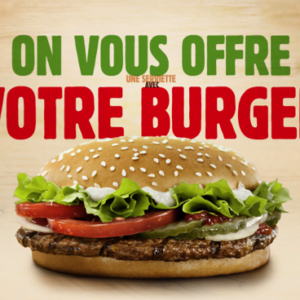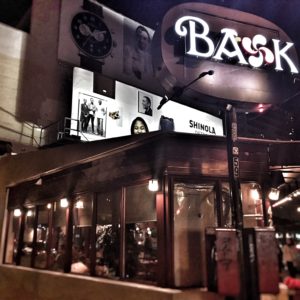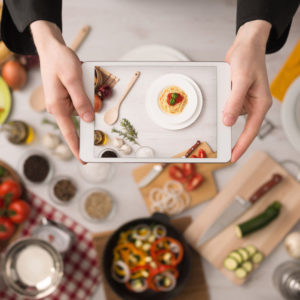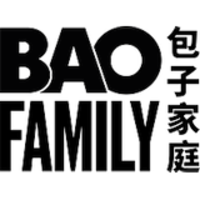
04 April 2018
Hotel Restaurants : How to Promote your Hotel Restaurant and Increase Your Sales
How many people would think about booking a table for lunch or dinner at a hotel restaurant when they’re not staying at the hotel? Not very many. This is precisely what’s at stake for hotel restaurants looking to fill their tables.

Hotel restaurants are first and foremost restaurants. They offer the same service as their autonomous counterparts: a kitchen, food, a seating room, and a staff. We talked to experts, hotel managers, and restaurant supervisors for hotel groups to better understand the issues of the trade and the measures taken to respond to them.
Everyone in the business is of one mind : hotel restaurants operate at a far lower rate than their seating capacity
Hotel restaurants struggle to attract customers who aren’t hotel guests
At first glance, it’s easy to think that hotel restaurants have a head start over other restaurants—they come in with a ready clientele staying right above. Research has shown that hotels with 63% of their rooms booked will be able to fill ⅓ of the restaurant’s tables with those very same customers. An occupancy rate of 30% guaranteed by hotel guests doesn’t sound so bad. Save for the fact that ⅔ of the restaurant remains to be filled. To get there, hotel restaurants will have to target non-guest customers.
This is where things get tricky: having lunch or dinner inside a hotel isn’t yet part of the customs for the general population. Most people don’t think about it because they don’t see the restaurant independently from the hotel.
It proves even more complicated for hotel restaurants to bring in outside customers as they’re usually not visible as restaurants, but as “a part” of a hotel.

A lack of identity separate from the hotel puts hotel restaurants at a disadvantage
A restaurant with the same name as the hotel that houses it exists only as a “feature” of that hotel. This explains why potential customers aren’t even aware of hotel restaurants in themselves, and don’t think about them when looking for places to eat. But this initial observation isn’t a death sentence, and many hotel restaurants across the Atlantic manage to reach very satisfying occupancy rates while keeping the name of the hotel and adding unique epithets for the restaurant.
This is the case for Standard Grill, the Standard Hotel’s restaurant, which managed to take advantage of the hotel’s reputation to open its doors to customers from other horizons.
Others go even further and turn the hotel’s restaurant into a brand in itself.
Creating and tapping into a strong brand identity can mean a bright growth potential for hotel restaurants
Some hotels have pushed the strategy to the point where they turned their restaurant into real profit centers. The Barrière Group, responsible for the Fouquet’s brand, now welcomes on a daily basis diners eager to eat at Fouquet’s, not at "the Barrière Hotel’s restaurant." “The Fouquet’s brand was created with the goal of reinforcing our restaurants’ image to attract more customers outside of hotel guests,” Pierre-Louis Renou, manager of the Cannes establishments, tells us. The group succeeded in building such a strong restaurant brand that people have stopped associating it with the parent hotels.
Other hotels manage to negotiate exclusive deals to house atypical or in-demand restaurants still rare on the market. In New York, the Parker is now home to the sole location of the Burger Joint brand. The “burger joint” is located behind a curtain in the main hall of the hotel, and boasts a unique decor (with customers’ testimonials on the wall), its own website, and its own social media accounts. The concept is showcased both in situ and online, and it works: expect an average waiting time of one hour every day to taste a burger!
Hotel restaurants have their own unique features
According to the hotel they’re in, their location, their product line, some restaurants have a more urgent need to bring in outside customers than others. Olivier Clerc, Restaurant Operations Director for the Grape Hospitality group, tells us that hotels close to business centers (where companies lack an office cafeteria) host many business lunches, but struggle more with weekend shifts.
Hotels located near offices with cafeterias don’t often succeed in attracting individuals for the lunch shift, but manage to get more satisfying turnover rates in the evening with hotel guests.
For others, we can also highlight how season patterns impact hotel restaurants. Anthony Torkington, former general manager at the Saint James Hotel in Bouliac, tells us that the Saint James’s restaurant in Bouliac attracts enough customers in the winter to generate a satisfying revenue on lunches. In the summer however, evenings work better thanks to the summer specials they developed, the longer days, and an outdoor terrace with a panoramic view of Bordeaux.
We spoke to specialists in order to identify the best initiatives for hotel restaurants to attract customers in the right areas.
Promoting a hotel restaurant: taking physical and digital steps helps improve turnover rates
Giving the restaurant a proper identity is the first step in making sure it is viable
To attract customers who aren’t hotel guests, a hotel restaurant is already ahead if it has a proper identity—a name, distinct from the hotel, a logo, a chef, a website. The restaurant has to be visible physically and online as a separate entity in and of itself.
That was Grape Hospitality’s wager with Happy Dock, the restaurant housed by the Mercure Hotel in Le Havre. The place was refurbished, the menu redesigned by Sophie Menut, the chef at the helm of the kitchen. Today, the restaurant has its own website, and appears as a restaurant in its own right:
The Hoxton Grill in London’s Hoxton Hotel preserved the already famous Hoxton brand, and followed the model of the Standard in New York:
Once its proper identity established, the restaurant has to be promoted and to that end use the right cost-effective online marketing tools.
Communicating not as a hotel feature but as a restaurant strengthens the establishment’s online presence
80% of people look up restaurants online. They have to be able to see, right next to independent restaurants, suggestions of hotel restaurants welcoming customers who aren’t guests at the hotel.
To that end, restaurants have to be listed online independently from their hotel. Good organic SEO, a smart online communications strategy, a website, and independent Facebook and Instagram accounts are necessary to boost the restaurant’s visibility.
This is what the Hoxton Grill in London’s Hoxton Hotel did on Instagram:
A good social media strategy is a way to reach more potential customers, but we also recommend focusing on having strong local roots to widen turnover rates.
Developing strong local roots is a way to promote the restaurant to those most likely to become loyal customers
Consumers trust products as long as they know where they come from. Working with local growers and producers means getting closer to customers. The Saint James in Bouliac picked that method for the dishes on its menu, but it also went further.
The Saint James in Bouliac created the "Saint James Market." Four times a year, on a Sunday between 9 a.m. and 1 p.m., the hotel invites local growers (who supply the restaurant’s kitchen) to sell their products to the public. About 1100 people come every time. The goal of the seasonal market is, as Anthony Torkington relates, is to attract and entice Bordeaux residents to come have lunch or dinner in hotel restaurants: “We highlighted this type of events to promote the establishments and get people talking about them in a different light.”
Developing strong local roots can also take the form of astute diversification to highlight specific services and improve the restaurant’s renown.
Diversifying the smart way: by capitalizing on their strengths and proximity to hotels, hotel restaurants have the potential to become drop-in “third places”
Introducing new activities associated with the hotel’s restaurant is a way to attract a new customer base
Diversification is a way for hotel restaurants to take advantage of their strengths, namely how close they are to a hotel and all of its amenities. Indeed, as Olivier Clerc points out, “We have to inject life into hotel restaurants, these days we live in a world where everything is modernized, and we have an obligation to go out and get customers from outside of the hotel.” By capitalizing on these assets, hotel restaurants can organize special events and bring in new people inside their walls. Grape Hospitality’s restaurants took some interesting initiatives in that regard.
Once a month, the Mercure Hotel in Roissy sets up an exhibition by volunteer artists, with a gallery opening to boot, which attracts new people to the hotel, and is also a chance to sell beverages and various meats and cheeses, either at the bar or in the hotel.
By taking advantage of the existing hotel structures, the restaurant can develop a range of products aimed at customers outside of the hotel
Hotels usually serve breakfasts which more or less resemble what a brunch would look like (eggs, cheese, charcuterie etc.). Starting with the advantages they already had, the Amour Hotel and the Marriott Champs Élysées developed a brunch offer to attract customers outside the hotel. One way to promote their new diversified offer was to collaborate with influencers.
Two of them, pia_mbd and callmevoyou were invited to try the brunch and share their experience on their social media accounts. Their audience, for the most part young, urban, and for whom brunch is a fact of life, was able to discover the hotel restaurant’s new offer.
One of the oldest English traditions is the afternoon tea, and it is more than renowned in London: in some of the most beautiful hotels such as the Ritz London, one has to wait several months for a seat a one of its tables set for tea. The tradition has since crossed the pond and hotels in Paris seized the opportunity to fill their salons and generate new avenues for revenue. Indeed, hotels like the Shangri La or the Westminster Hotel have developed a “Tea Time” service catering to a younger audience, and resorted to influencers to promote it.
Another example of smart diversification: Olivier Thomas, director of the Blagnac Pullman near Toulouse, saw that the restaurant’s lunch revenue was seriously impeded by the proximity of a number of office cafeterias. The simple lunch menu wasn’t enough to attract the surrounding business crowd. Seeing this, Olivier Thomas developed a special menu with real added value and a competitive edge: “packages,” or lunch formulas to which he added a pass granting access to the pool, a massage, or a sports class within the hotel.
Going beyond with a strong concept grants hotel restaurants a new appeal
Still at Grape Hospitality, the Mercure in Sophia Antipolis took in a restaurant with quite a strong concept: “In the Dark. Dinner is served in pitch-black darkness by nonseeing people. The experience goes beyond the simple meal; senses are thrown. Deprived from their sight, customers are invited to re-evaluate their perception of taste. This buzzworthy initiative was a way to promote both the hotel and the restaurant, and to bring in a new audience. The success was such that the collaboration was renewed.
We would like to kindly thank the hotel restaurant professionals who took the time to answer our questions:
Pierre-Louis Renou, Area General Manager for the Barrière Group in Cannes. He manages three hotels: the Majestic Cannes, the Gray d’Albion Cannes, and the Carl Gustaf St Barth.
Anthony Torkington, former General Manager at the Saint James in Bouliac. He was just named new General Director of Relais & Châteaux.
Olivier Clerc, Director of Restaurant Operations at Grape Hospitality. Launched in 2017, Grape Hospitality is the owner, operator, and manager of 85 hotels in 8 European countries, which represents over 9000 rooms operated under a franchise contract.








































































































